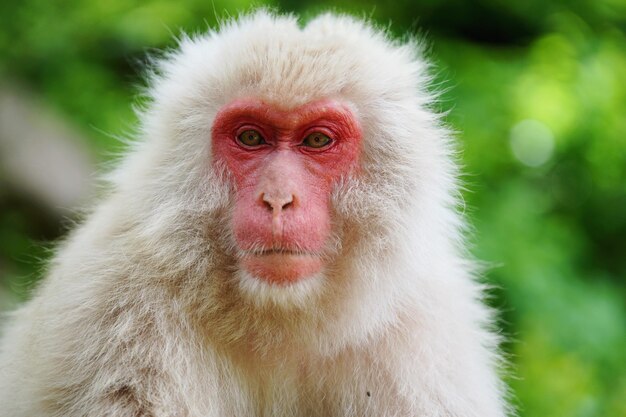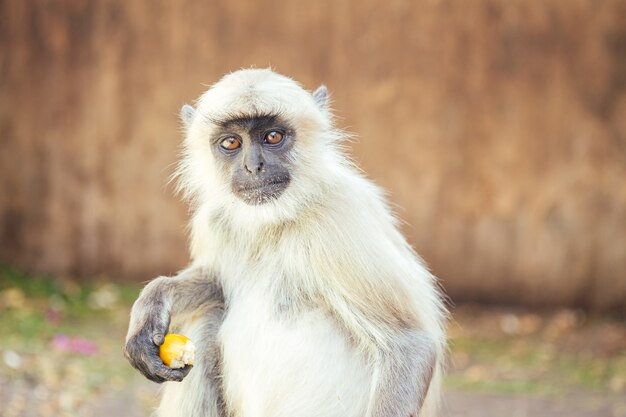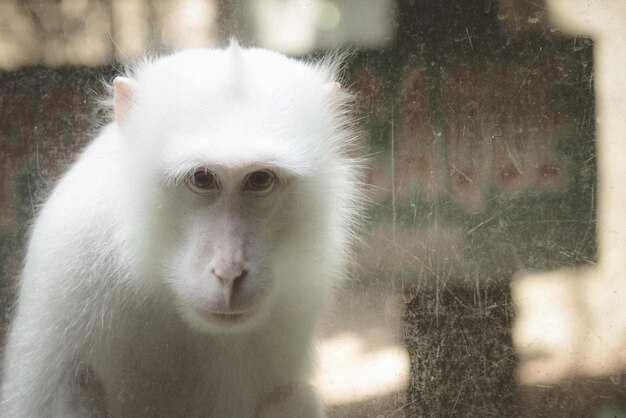Albino monkeys are rare and captivating creatures that capture the imagination of nature enthusiasts worldwide. Their unique appearance, marked by white fur and pinkish skin, makes them stand out in the animal kingdom. In this blog, we’ll explore everything you need to know about albino monkeys, including their characteristics, habitat, challenges, and why they’re so intriguing to researchers and animal lovers alike.
What Is an Albino Monkey?
An albino monkey is a primate born with albinism, a genetic condition that results in a lack of melanin production. This condition affects the pigmentation of their skin, fur, and eyes, giving them a striking white appearance. Albinism occurs across various animal species, but albino monkeys are particularly rare, making them a subject of fascination.
Unlike their non-albino counterparts, albino monkeys often have sensitive skin and light-colored eyes, which can be more vulnerable to sunlight. Their unique characteristics make them both a marvel of nature and a symbol of survival against the odds.
Where Can You Find Albino Monkeys?

Albino monkeys are not a distinct species but rather individual monkeys within existing species. These rare individuals can be found in various regions, depending on their species. Some common habitats include:
- Rainforests: Many monkey species, including albino variants, thrive in tropical rainforests.
- Savannahs and Grasslands: Some monkeys inhabit open grasslands where food sources are abundant.
- Mountainous Regions: High-altitude forests are also home to certain species of monkeys, including albino ones.
Because of their rarity, spotting an albino monkey in the wild is incredibly challenging. Many people learn about them through conservation centers, wildlife documentaries, or zoos.
Characteristics of Albino Monkeys
Albino monkeys share certain traits with other albino animals while retaining features specific to their species. Here are some key characteristics:
- White Fur: Their fur lacks the pigmentation seen in other monkeys, resulting in a striking white coat.
- Light Eyes: Albino monkeys often have pink or light blue eyes due to the absence of melanin.
- Sun Sensitivity: They are more prone to sunburn and need shaded environments to avoid skin damage.
- Unique Social Dynamics: In the wild, their unusual appearance may affect how they are perceived by other monkeys in their group.
Challenges Faced by Albino Monkeys
While their appearance makes them fascinating, albino monkeys face several challenges in the wild:
- Increased Predation: Their white fur makes them highly visible, putting them at greater risk of being hunted by predators.
- Health Issues: Albinism can lead to vision problems, skin sensitivity, and a higher susceptibility to diseases.
- Social Isolation: In some cases, albino monkeys may be rejected by their troop due to their different appearance.
Conservation efforts are essential to ensure the survival of albino monkeys, particularly in their natural habitats.
The Symbolism of Albino Monkeys
Albino monkeys hold a special place in various cultures and folklore. Their rarity and unique beauty often make them symbols of purity, mystery, and resilience. In some cultures, they are considered sacred or seen as omens of change.
Scientists and researchers also view albino monkeys as valuable subjects for studying genetic diversity and adaptation in wildlife.
Albino Monkeys in Captivity
Many albino monkeys are found in conservation centers or zoos where they receive specialized care. These facilities provide them with environments tailored to their needs, including protection from sunlight and balanced diets.
Keeping albino monkeys in captivity allows researchers to study them closely, understand their behavior, and ensure their survival when living in the wild becomes too dangerous.
How to Protect Albino Monkeys
Given their vulnerability, protecting albino monkeys is crucial. Here are some steps conservationists and governments are taking:
- Preserving Habitats: Protecting natural habitats ensures that albino monkeys and their species can thrive.
- Anti-Poaching Measures: Laws and patrols help safeguard these rare animals from illegal hunting.
- Awareness Campaigns: Educating the public about albino monkeys helps reduce human threats and promotes conservation efforts.
Fun Facts About Albino Monkeys

- Albino monkeys are not a specific species but individuals within various species.
- Albinism is caused by a genetic mutation that can occur in all vertebrates, including humans.
- Albino monkeys are incredibly rare, with only a handful documented in the wild.
- Their striking appearance often draws significant attention, making them a popular subject in wildlife photography and documentaries.
Why Albino Monkeys Fascinate Us
The albino monkey captivates people because of its rarity and beauty. Its white fur and light eyes create an ethereal image, while its struggle to survive in the wild showcases resilience. For wildlife enthusiasts, spotting an albino monkey is a once-in-a-lifetime experience.
Moreover, their existence highlights the diversity of life on Earth and the importance of protecting even the rarest creatures. By supporting conservation efforts, we can help ensure that albino monkeys and other unique animals continue to thrive.
Conclusion
The albino monkey is a testament to the wonders of nature. From its striking appearance to the challenges it faces in the wild, it inspires awe and a sense of responsibility. By learning more about albino monkeys and supporting conservation efforts, we can help protect these extraordinary creatures for generations to come.
If you’ve ever dreamed of encountering an albino monkey or are simply curious about their existence, remember that they symbolize the beauty and fragility of our natural world. Let’s work together to ensure their survival and celebrate their uniqueness.



1 Comment
Pingback: Unveiling the Rare Beauty of albino monkeys - nymagazine.org